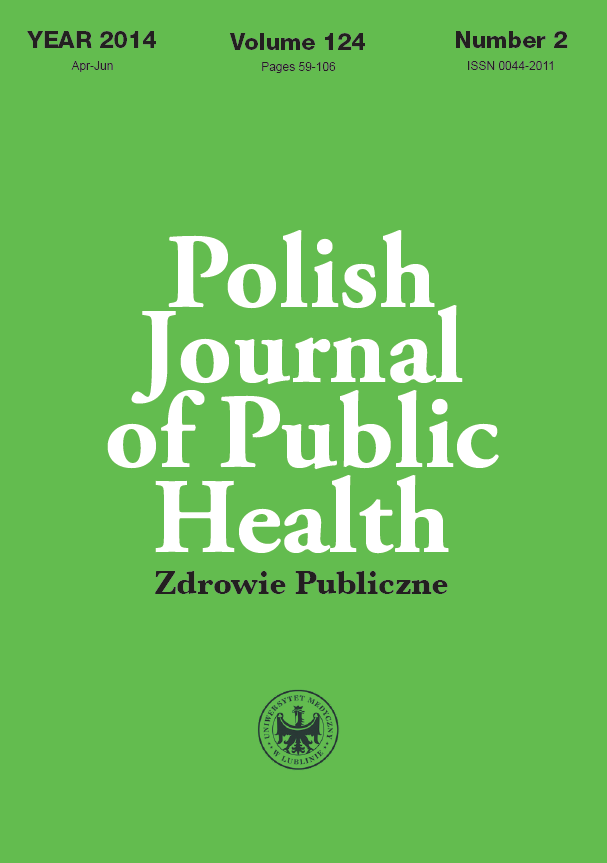The assessment of periodontal status and treatment needs of the adult population aged 34-44 residing in Lublin province and visiting the dentist regularly
DOI:
https://doi.org/10.2478/pjph-2014-0019Słowa kluczowe:
periodontitis, periodontal index, public healthAbstrakt
Introduction. Periodontitis is a group of inflammatory disorders affecting periodontal tissues. This condition manifests by a progressive destruction of the alveolar bone, subsequently leading to tooth loss. World Health Organization introduced Community Periodontal Index of Treatment Needs in order to gain data regarding periodontal health and treatment needs of people with periodontitis
Aim. To evaluate the periodontal status of citizens living in the city of Lublin and its surrounding, using Community Periodontal Index of Treatment Needs (CPITN).
Material and methods. Community Periodontal Index of Treatment Needs was used to assess the periodontal status among 180 patients aged 35-44 residing in Lublin and the area around it.
Results. Periodontal diseases have been observed in over 90% of the examined population. Treatment need index TN1 has referred to 26.11% of the patients, TN2 – 61.67% and TN3 – 2.22% respectively.
Conclusions. Patients who visit the dentist regularly have a better periodontal status as compared to groups randomly selected.
Bibliografia
1. Iwanicka-Frankowska E, Wierzbicka M, et al. Stan zdrowia jamy ustnej polskiej populacji osób dorosłych w wieku 35-44 lat w latach 1998- 2002. Stomatol Współcz. 2003;10(5): 9-15.
2. Banach J. Co z realizacją periodontologicznych celów zdrowia Światowej Organizacji Zdrowia do 2010 roku w Polsce? Dent Med. Probl. 2002;39:9-12.
3. Jańczuk Z. Stan narządu żucia polskiej populacji. Szczecin: PAM; 1990. 4. Dąbal I, Koziarz A. Stan i potrzeby lecznicze przyzębia u osób 35-44 letnich z województwa katowickiego. Czas Stomat. 2000;LIII:2.
5. Iwanicka-Frankowska E, Wierzbicka M, Pierzynowska E, Kępa J. Stan przyzębia i potrzeby profilaktyczno-lecznicze grupy osób dorosłych z regionu Warszawy. Nowa Stomatol. 2003;3(25):148-51.
6. Jodkowska E. Stan uzębienia dorosłych mieszkańców Polski w latach 1988-2009. Przegl Epidemiol. 2010;64:571-6.
7. Górska R, Pietruska M, Dembowska E, et al. Częstość występowania chorób przyzębia u osób w wieku 35-44 lat w populacji dużych aglomeracji miejskich. Dent Med Probl. 2012;49(1):19-27.
8. Morris AJ, Steele J, White DA. The oral cleanliness and periodontal health of UK adults in 1998. Br Dent J. 2001;191(4):186-91.
9. Popowski W, Plakwicz P, Wieczorek P, et al. Stan i potrzeby lecznicze przyzębia osób dorosłych w wieku 35-44 lat, zamieszkałych w regionie warszawskim – badania porównawcze. Nowa stomatol. 2001;4(18):38-41.
10. Karikoshi A, Murtomaa H.:Periodontal treatment needs in a followup study among adults with diabetes in Finland. Acta Odontol Scand. 2003;61:7-10.


